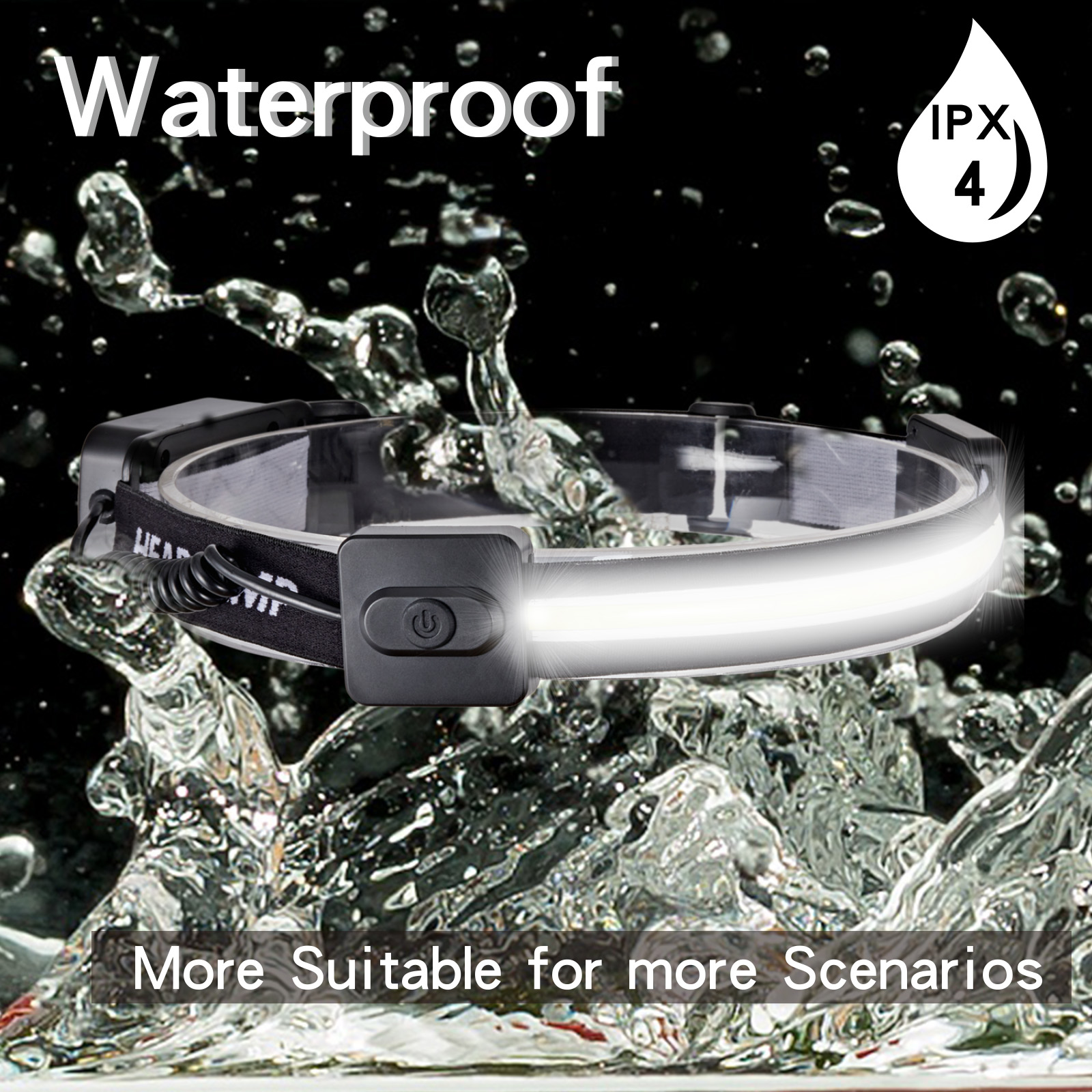As an important lighting equipment, waterproof headlamp has a wide range of applications in outdoor. Due to the variability and uncertainty of the outdoor environment, the waterproof headlamp must have sufficient waterproof performance to ensure its normal work under various weather and environmental conditions. So rechargeable fishing headlamp generally do which IP waterproof level test?
In the IP waterproofing grade test, the tightness test is one of the core parts. The sealing test means that under specified conditions, the test sample is placed in water or spray water, and then the housing and connection parts are tested to evaluate the sealing performance of the waterproof lamp. In the sealing test, the test sample must be tested several times to determine its IP waterproof rating. In the test, the product with a high IP waterproof rating can better protect the internal electrical components and improve the reliability and service life of the product.
Splash testing is another important test item. Splash resistance test is to test the splash resistance of waterproof rechargeable headlamp by spraying specific water flow to simulate the erosion of liquids such as rain on the product. The anti-splash water test needs to ensure that the air velocity and water velocity at each Angle under the test state are consistent, ensure the accuracy of the test results, and evaluate the actual performance of the waterproof lamp through the test results.
The IP waterproof grade of the waterproof headlamp is IP65 and IP44, and the specific IP protection level to be selected for testing needs to be evaluated according to the application requirements of the product.
IP grade test ratings are divided into two groups:
One set is for foreign objects and dust (i.e., solids) and the other for liquids (e.g., water), with each rating beginning with “IP” for entrance protection, and the number after “IP” related to the rating for foreign objects and dust entering.
Numbers (0 to 6) indicate the level of protection the entry of the housing provides for solid objects (such as tools, wires, hands, fingers, or dust).
The second number refers to preventing liquids from entering, and when addressing either of these two contaminants, the remaining types are identified with an X. For example, IP1X belongs to level 1 to prevent the entry of foreign objects and dust, while X indicates that the level of entry into the liquid is not given, note that X does not indicate zero protection.
The second (0 to 8) indicates the inlet of the equipment in the protective housing to water, for example, IP54 indicates the protection level of 5 for the entry of solid objects and 4 for the entry of liquids.
Post time: Aug-18-2023
 fannie@nbtorch.com
fannie@nbtorch.com +0086-0574-28909873
+0086-0574-28909873






